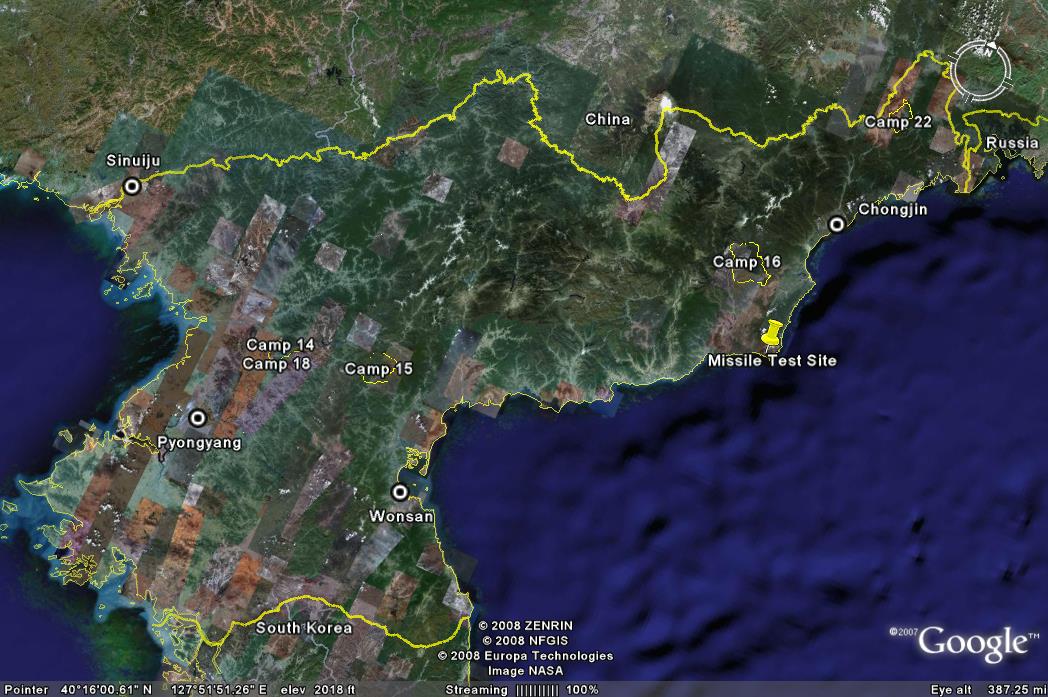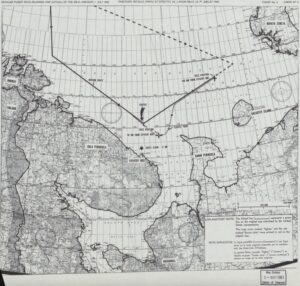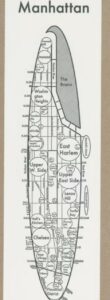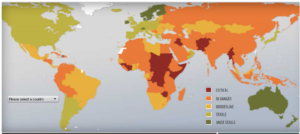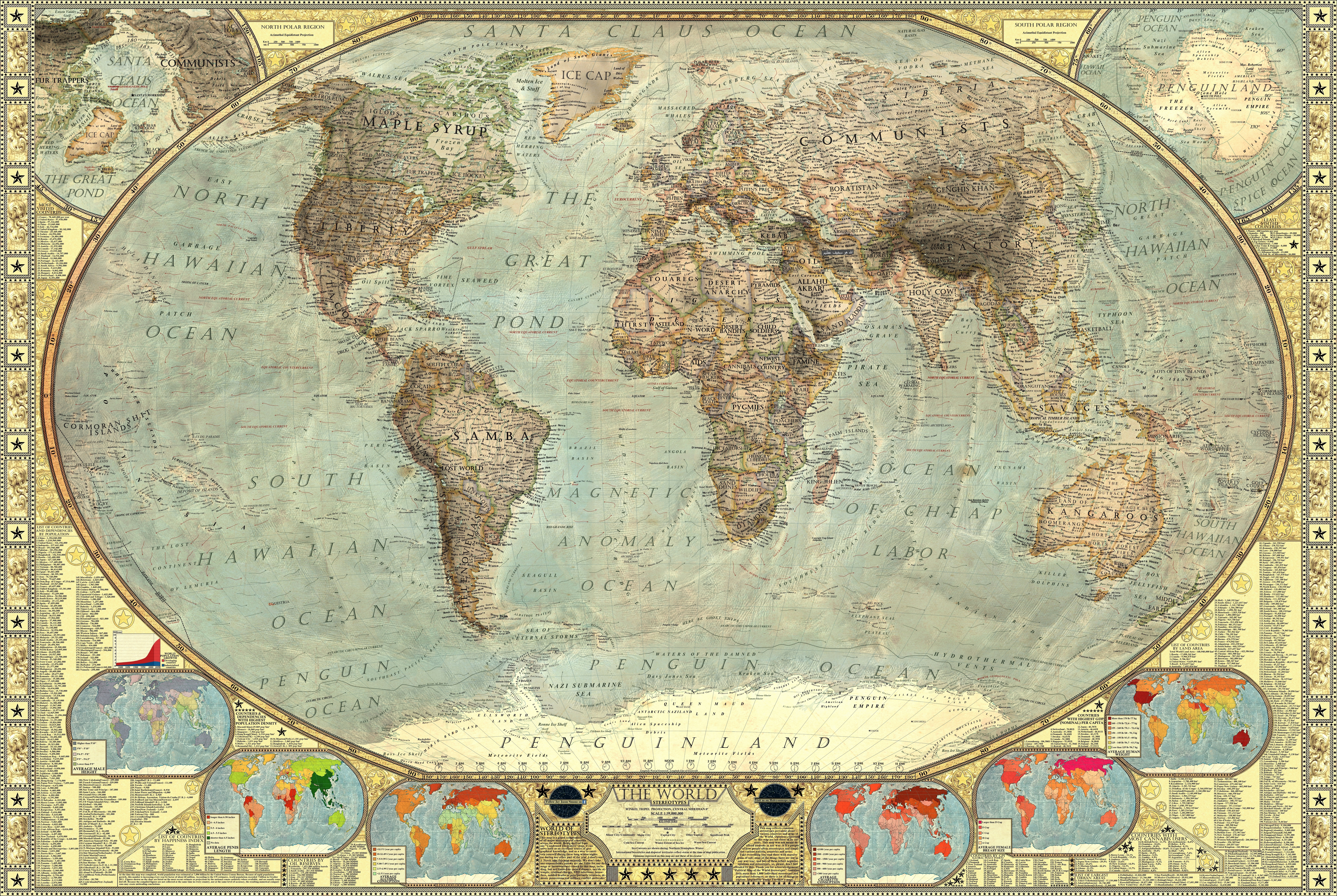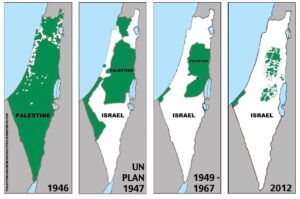
Borders. No two nations have had more issues with this word and what it represents over the past century than Israel and Palestine. The brief history of these nations has been marked by constant conflict between one another, primarily over disputes about borders. Amid the current intensity surrounding the Israel-Palestine conflict, I’ve chosen to feature a map of the evolving borders between these two nations as my map of the week. However, before we get into the map details, to understand this map and the conflict that is occurring right now, we must first delve into the turmoil filled history between the two nations. Maps are handy, but they can oversimplify things, especially in a complex conflict like this. Exploring the history behind these maps shows us their limitations in capturing the full story. It’s a reminder that the lines on a map might not show everything, especially when you consider the real-life experiences, cultural histories, and complicated politics between Israel and Palestine. Understanding the historical context helps us see where these maps might miss parts of the story, reminding us that they don’t always tell the whole tale.
History behind the 1st Map – 1946
After World War I concluded in 1918, the British assumed control over the entire region known as Palestine. Subsequently, in 1923, the League of Nations sanctioned a British mandate, which included the establishment of a Jewish national homeland in Palestine. Throughout the Mandate period, spanning from 1922 to 1947, there was a substantial wave of Jewish immigrants, with a sharp increase during the 1930s in response to Nazi persecution. This demographic shift caused discontent among the local Arab population, who were already fighting for independence from the British. These tensions led to a rebellion in 1937, which was followed up by several acts of terror from both the Arabs and the Jewish (un.org).
This conflict takes us all the way to 1946, where we can see the first of four maps, in which Palestine is still under British control. The map is very simplistic in portraying the region, but in doing this, it remains incredibly vague. The trade-off here is that while the map is easy to look at and analyze, it fails to include any basic context or anything that might help a viewer of this map. For example, there is no mention that the region is under British occupation. To add to the ambiguity, there are areas of white dotted throughout the northern half of Palestine, which remain entirely unlabeled. The only two labels are “Palestine” and “1946”. However, since we have looked at the history behind this region, we can assume the white areas are home to the growing Jewish population. This year marked a crucial point before the eventual creation of Israel in 1948.
History behind the 2nd Map – 1947
The second map showing the region in 1947 represents a crucial historical juncture prior to the major transformation of the region. In 1947, after more than two decades of control over the region, the British handed Palestine over to the United Nations. The UN proposed to terminate the mandate and separate Palestine into two independent states, one Palestinian Arab and the other Jewish, with Jerusalem internationalized (un.org). While several Jewish leaders accepted the proposal, there was strong opposition from many Palestinian Arabs, who argued that they represented most of the population and should be granted more territory.
In this map, we can see the boundaries proposed by the UN plan. While the country of Israel was not formed until 1948, it is labeled on the map flanked by the by the two Palestinian Arab controlled regions known as the “West Bank” and “Gaza Strip.” Once again, the map displays only the bare minimum. It fails to provide any Political context, demographic context, or tensions and conflict, which are necessary to understand the region at such a confusing time.
History behind the 3rd Map – 1948-1967
Almost immediately after the UN plan, Arab armies moved in to prevent the establishment of the Israeli state, leading to the 1948 Arab-Israeli War. This conflict involved Israel and five Arab nations, including Transjordan (now Jordan), Iraq, Syria, Egypt, and Lebanon. By the war’s end in July 1949, Israel expanded to control 77 percent of the former British Mandate, while Jordan took control of the West Bank and Egypt took control of the Gaza Strip. In addition, over half the of the Palestinian Arab population fled or were expelled (un.org).
This change is reflected in the map, which shows an expansion in Israeli territory relative to the previous map from 1947. However, the map fails to show how the former Palestinian territories are now under control Egypt and Syria, conveniently labeling them “Palestine.” Additionally, the third map features a small black dot where Jerusalem lies, the only feature in any map that does not pertain to the borders of Israel and Palestine. However, it remains unlabeled and does not distinguish that the city of Jerusalem was divided during this time. West Jerusalem was part of Israel while East Jerusalem was controlled by Jordan.
History behind the 4th Map – 2012
The period from 1967 to 2012 witnessed significant changes in the Israeli-Palestinian borders, marked by conflicts, negotiations, and geopolitical shifts. After the Six-Day War of 1967, Israel captured the West Bank, East Jerusalem, and the Gaza Strip, leaving Palestine with little to no territory. After several years, in 1993, The Oslo Accords established Palestinian governance over parts of the West Bank and Gaza Strip, although the exact borders were not finalized. From then on to 2012, the Israeli-Palestinian borders underwent significant transformations due to peace agreements, unilateral actions, and ongoing disputes.
In the 4th map segment, the transformation from the previous map segment is evident and confusing. Despite all the conflict and transformations that occurred in the Gaza Strip from 1967-2012, the border looks almost identical to the one portrayed in the 3rd map segment. On the other hand, the West Bank looks drastically different. Palestinian territories are dotted all throughout the area, with some of the green dots as small as specs of dust. Due to the confusion and conflict in the region, the borders can be incredibly vague and extremely difficult to establish on a map.
Propaganda?
After a quick look at the history between these two nations, only one word comes into mind when it comes to borders: “vague.” A different map could display an entirely different picture of the Israeli-Palestinian borders. In creating any map, cartographers are faced with the challenging task of making specific choices about borders and deciding which features to include or exclude. These choices inevitably reveal the biases of the mapmaker. Notably, the source of the first map is the Palestine Awareness Coalition, a fact visible in the bottom left-hand corner. Unsurprisingly, these maps were faced with opposition from Pro-Israeli media, which said that “these “series-of-four” maps are common in Pro-Palestinian media” and “have become an iconic feature of Palestinian propaganda” (Maynard). Rather than explicitly labeling them as dangerous propaganda, it’s important to recognize that these maps, particularly in their “four maps” style, may struggle to capture the full historical intricacies of the Israeli-Palestinian conflict. With a conflict as complex and polarizing as the one this map is dealing with, are maps the best tools right now to accurately show the immensity of this conflict? Or are they immediately problematic given maps’ rhetorical nature?
Citations
History.com. (2023, October 17). Palestine , Religion & Conflicts. https://www.history.com/topics/middle-east/palestine#the-partition-of-palestine
Maynard, J. (2020, July 12). “Disappearing Palestine” – the Maps that Lie. AIJAC. https://aijac.org.au/fresh-air/disappearing-palestine-the-maps-that-lie/
Mor, S. (2015, January). The mendacious maps of Palestinian “loss.” The Tower. https://www.thetower.org/article/the-mendacious-maps-of-palestinian-loss/
un.org. (n.d.). History of the question of palestine – question of Palestine. United Nations. https://www.un.org/unispal/history/
Blog Link
Mapillary Blog: https://blog.mapillary.com/
Atlas Choice
Cold War Map Gallery
This atlas features several unorthodox-looking maps from the Cold-War period that relate to the conflict between the United States and the Soviet Union. This is relevant to our class because a large portion of our class was dedicated to the impact of maps on Cold-War tensions. The atlas connects to our study of maps as rhetorical because there are several examples of how maps served as powerful tools for ideological communication and geopolitical influence during a period of intense global tension.
